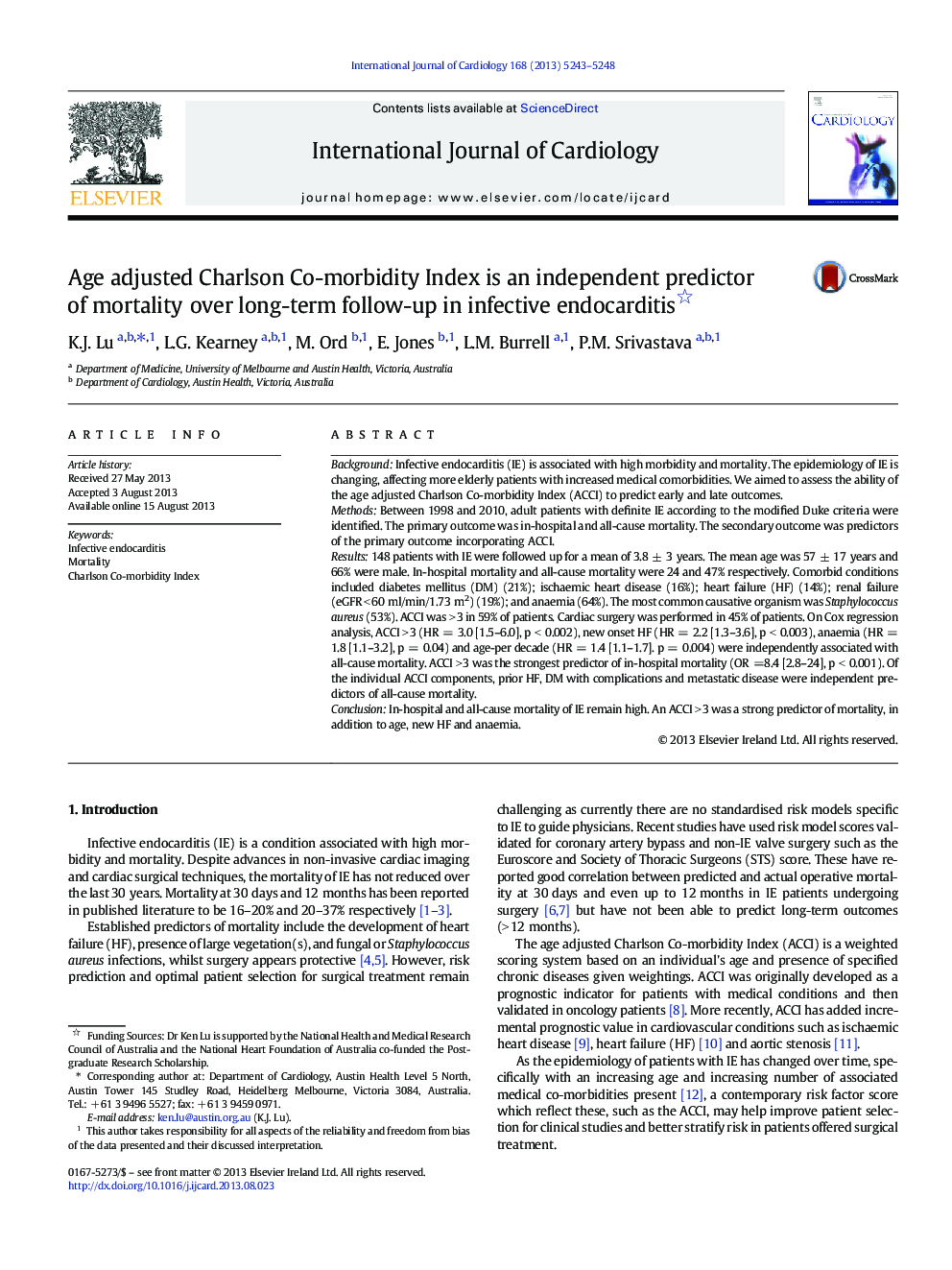| Article ID | Journal | Published Year | Pages | File Type |
|---|---|---|---|---|
| 5975059 | International Journal of Cardiology | 2013 | 6 Pages |
BackgroundInfective endocarditis (IE) is associated with high morbidity and mortality. The epidemiology of IE is changing, affecting more elderly patients with increased medical comorbidities. We aimed to assess the ability of the age adjusted Charlson Co-morbidity Index (ACCI) to predict early and late outcomes.MethodsBetween 1998 and 2010, adult patients with definite IE according to the modified Duke criteria were identified. The primary outcome was in-hospital and all-cause mortality. The secondary outcome was predictors of the primary outcome incorporating ACCI.Results148 patients with IE were followed up for a mean of 3.8 ± 3 years. The mean age was 57 ± 17 years and 66% were male. In-hospital mortality and all-cause mortality were 24 and 47% respectively. Comorbid conditions included diabetes mellitus (DM) (21%); ischaemic heart disease (16%); heart failure (HF) (14%); renal failure (eGFR < 60 ml/min/1.73 m2) (19%); and anaemia (64%). The most common causative organism was Staphylococcus aureus (53%). ACCI was > 3 in 59% of patients. Cardiac surgery was performed in 45% of patients. On Cox regression analysis, ACCI > 3 (HR = 3.0 [1.5-6.0], p < 0.002), new onset HF (HR = 2.2 [1.3-3.6], p < 0.003), anaemia (HR = 1.8 [1.1-3.2], p = 0.04) and age-per decade (HR = 1.4 [1.1-1.7]. p = 0.004) were independently associated with all-cause mortality. ACCI > 3 was the strongest predictor of in-hospital mortality (OR = 8.4 [2.8-24], p < 0.001). Of the individual ACCI components, prior HF, DM with complications and metastatic disease were independent predictors of all-cause mortality.ConclusionIn-hospital and all-cause mortality of IE remain high. An ACCI > 3 was a strong predictor of mortality, in addition to age, new HF and anaemia.
